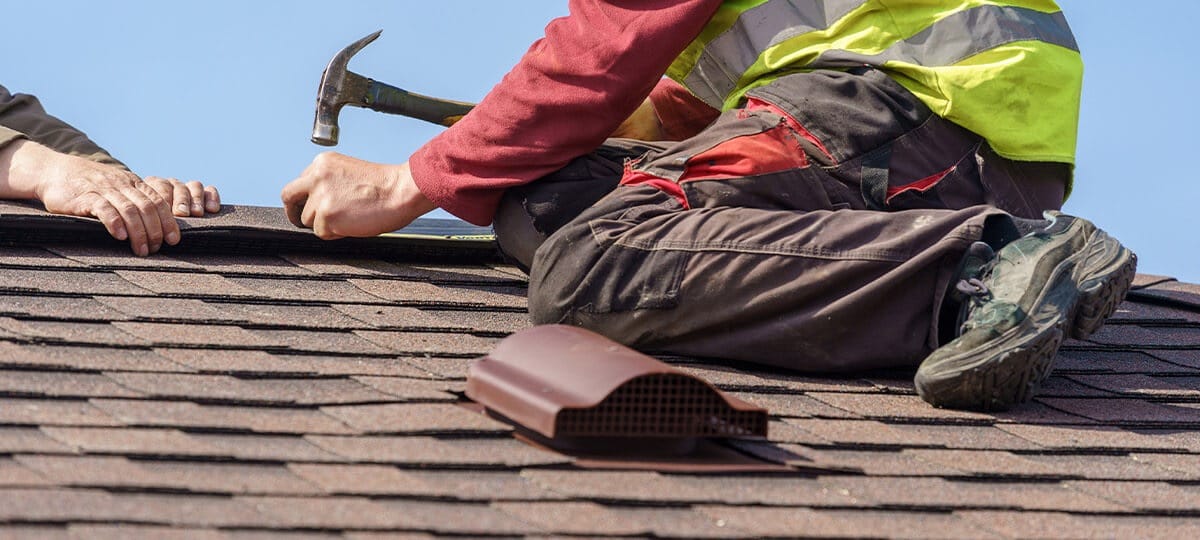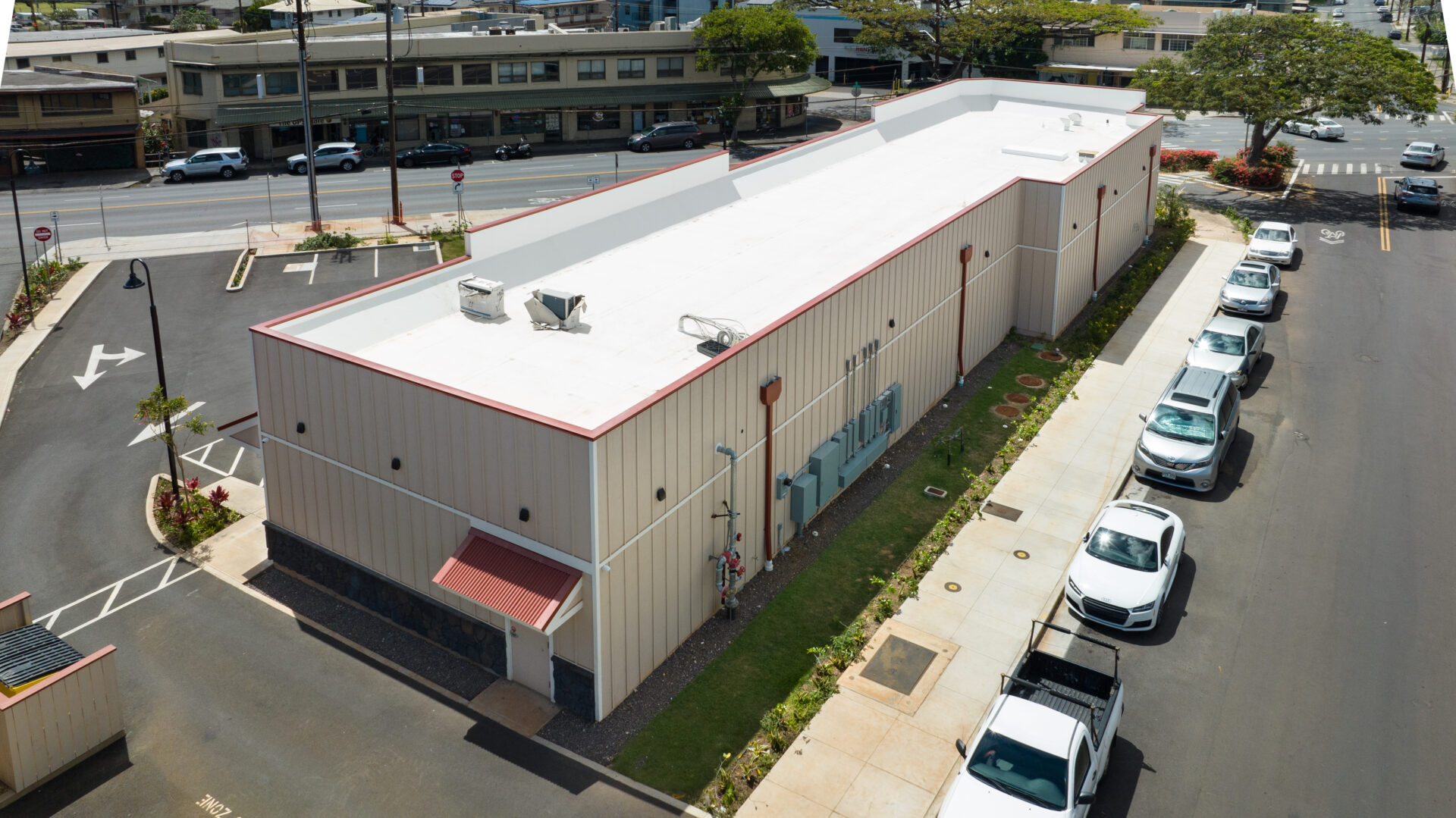Discover Usual Roofing Troubles and Exactly How to Address Them Efficiently
When it involves your roof covering, spotting problems early can save you time and cash. You may notice water discolorations on your ceiling or fractured tiles throughout your routine checks. Overlooking these signs can cause larger issues down the line. Comprehending just how to determine and resolve these typical roofing problems is important for keeping your home's integrity. Yet what specific actions should you require to ensure your roofing stays in top condition?
Determining Roofing System Leakages and Their Reasons

Following, analyze your roofing system from the exterior. Look for missing or split tiles, rusted flashing, or damaged gutters. Focus on locations around smokeshafts, vents, and skylights, as these are usual leakage sources. If you identify any one of these problems, it's vital to resolve them quickly.
Throughout hefty rain, observe your roof covering for any type of merging water or drips. This can reveal leakages that might not show up during completely dry conditions. By remaining alert and routinely checking your roofing system, you can capture leaks early and secure your home from additional damage.
Managing Missing or Damaged Shingles
When you see missing out on or damaged roof shingles, it's vital to act rapidly to avoid further concerns. You'll wish to recognize the level of the damage, repair any type of missing roof shingles, and consider preventive maintenance tips to maintain your roof covering in top form. Taking these steps can save you time and cash later on.
Identifying Roof Shingles Damage
Although tiles are designed to stand up to the components, they can still suffer damage gradually, bring about potential leakages and costly repair services. To recognize tile damages, begin by examining your roofing system for missing out on, broken, or crinkled tiles. Seek indicators of staining or granule loss, which can suggest damage. Pay attention to any locations where shingles are raising or buckling, as these can develop vulnerabilities. It's likewise smart to examine for water discolorations or mold and mildew on your ceilings and wall surfaces, as these could signify leakages originating from damaged roof shingles. Consistently checking your roofing, particularly after serious climate, can aid you capture problems early and maintain the stability of your home.
Repairing Missing Tiles
After finding roof shingles damage, the next step is addressing any kind of missing or harmed roof shingles immediately to avoid more issues. If you can, climb up onto your roofing securely, putting on proper equipment. Taking action quickly will aid maintain your roofing system's stability and expand its life expectancy.
Preventive Upkeep Tips
Exactly how can you keep your roofing system in leading form and protect against tiles from going missing or getting harmed? Normal examinations are vital. Check your roof covering at the very least two times a year and after serious weather condition. Look for indications of wear, such as curling, splitting, or loose tiles.
Keep rain gutters clean and devoid of debris to assure appropriate water circulation and prevent tile damages. Cut overhanging branches to decrease the danger of them scraping versus your roof during tornados.
Consider using a protective sealer to expand your shingles' life-span. If you see any type of problems, resolve them promptly to prevent costly repair services later on. Taking these preventative measures can conserve you time and money while guaranteeing your roofing continues to be durable and trustworthy.
Understanding Roofing System Ventilation Issues
Appropriate roofing ventilation is vital for preserving the durability and performance of your roof, as it aids regulate temperature level and dampness levels in your attic. Without sufficient ventilation, you may face problems like extreme warm accumulation, causing premature shingle wear and tear, or enhanced humidity that can cause mold growth and wood rot.
To assess your roof ventilation, check for indications of overheating, such as warped shingles or a warm attic room. Seek obstructed vents, which can restrict airflow and trap heat. You need to assure your intake and exhaust vents are well click to investigate balanced, permitting proper air exchange.
Resolving these problems quickly can safeguard your roof covering and save you from costly repair work down the line. Keep aggressive in preserving your roofing's air flow to safeguard your home.
Dealing With Roof Moss and Algae Development
While you may appreciate the all-natural appearance of moss and algae on your roofing system, these microorganisms can lead to significant issues if left unchecked. Utilize a soft-bristle brush to carefully scrub away the moss and algae, being mindful not to damage your tiles.
Next, consider applying a specialized roofing cleaner or a mix of water and bleach to eliminate continuing to be spores. Wash completely to stop any type of chemical damages. In addition, install zinc or copper strips along the ridge of your roofing system. As rainfall cleans over these metals, it creates a protective barrier versus future development. Normal inspections and maintenance will assist protect against moss and algae from returning, guaranteeing your roof stays healthy for several years to come.
Repairing Storm Damage and Wind Issues
After a storm, it's vital to analyze your roofing for damage caused by high winds and heavy rainfall. Begin by inspecting for missing out on or damaged shingles, as these are typical casualties.
Try to find any type of sagging locations, which could indicate water buildup or structural issues. If you locate any type of debris, like branches or leaves, eliminate them carefully to stay clear of further damages. If your gutters are obstructed, clear them to guarantee appropriate drainage.

For tiny repair services, you might manage it on your own, however do not hesitate to call a specialist for comprehensive damages. Bear in mind, acting quickly can conserve you from bigger issues down the line, so take that analysis seriously and address any type of issues asap.
Recognizing Signs of Structural Damage
Just how can you inform if your roofing system is enduring from architectural damages? Next off, check for cracks or voids in the walls or ceiling, as these can signify shifting or resolving due to roofing issues. If you see missing or broken tiles, it's necessary to resolve them promptly, as they can expose your roof to more damage.
Regular Maintenance Tips for Durability

Regular Inspections Significance
Because a roofing is your home's initial line of protection versus the components, routine assessments are essential for preserving its integrity (roofing honolulu hi). You ought to check your roofing system at least twice a year, ideally in springtime and autumn, to catch prospective problems early. Seek missing or harmed shingles, signs of leakages, and any type of debris that could trigger problems. Pay attention to locations around chimneys, vents, and flashing, as these are typical weak points. If you discover anything uncommon, do not be reluctant to get in touch with a professional for a thorough analysis. Staying on par with these examinations can avoid costly fixings down the line and extend your roof's life-span, guaranteeing your home continues to be safe for several years to come.
Proper Rain Gutter Upkeep
Normal roofing evaluations normally lead to the value of appropriate seamless gutter maintenance. Check your seamless gutters for leakages or rust; they can trigger water damages to your roof covering and home. By adhering to these tips, you'll extend your gutters' life expectancy and secure your roofing.
Often Asked Concerns
Exactly How Can I Choose the Right Roof Product for My Home?
To select the right roofing material for your home, consider climate, toughness, and visual appeals. Research alternatives like asphalt shingles, metal, or floor tile. Consider upkeep requirements and budget to find what matches you best.
What Are the Indications I Need a Roofing System Replacement As Opposed To Repair Service?
If you discover prevalent leaks, drooping, or missing out on roof shingles, you could require a roofing system replacement. If your roof covering's nearing its life expectancy or navigate to this site has substantial damages, it's time to contemplate a full substitute rather of just fixings.
Exactly how Frequently Should I Schedule Specialist Roofing System Inspections?
You should set up expert roof covering assessments at least yearly, click to read preferably in spring or autumn. This helps capture prospective concerns early, ensuring your roofing system remains in great problem and prolonging its life-span.
Can I Install a New Roofing Over My Old One?
You can mount a brand-new roof over your old one, however it's vital to inspect neighborhood building codes and guarantee the existing roof covering's condition is sound. This method can conserve time and cash, yet think about possible issues.
What Is the Average Lifespan of Various Roofing Products?
The standard life-span differs by material: asphalt tiles last 15-30 years, steel roofing systems can last 40-70 years, while ceramic tile or slate roof coverings may exceed 50 years. Pick intelligently based upon your environment and budget.
Final thought
By staying watchful and addressing typical roof covering issues without delay, you can shield your home and expand your roof covering's life expectancy. Routinely examine for leaks, damaged roof shingles, and ventilation issues, and deal with moss or algae development before it intensifies - roofing honolulu hi. After tornados, look for any type of damages and make necessary repair services. With a little regular upkeep, you'll not just protect your investment but likewise appreciate peace of mind recognizing your roof covering remains in leading form. Don't wait-- act now!